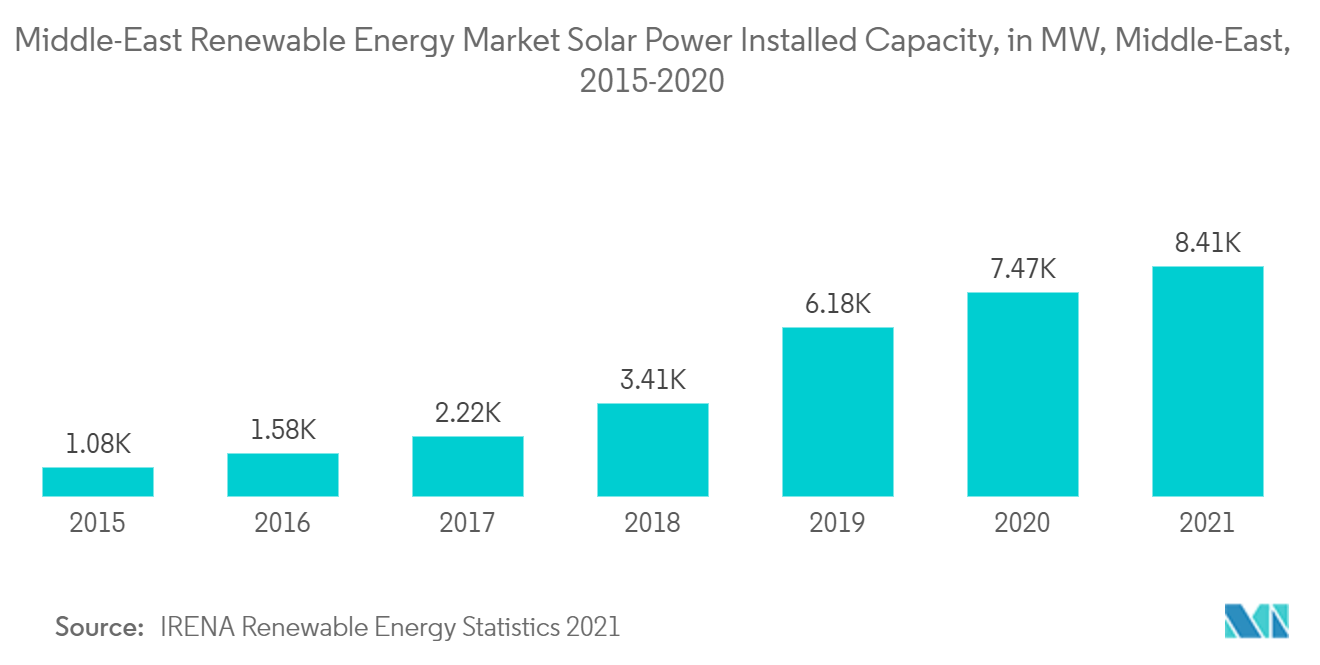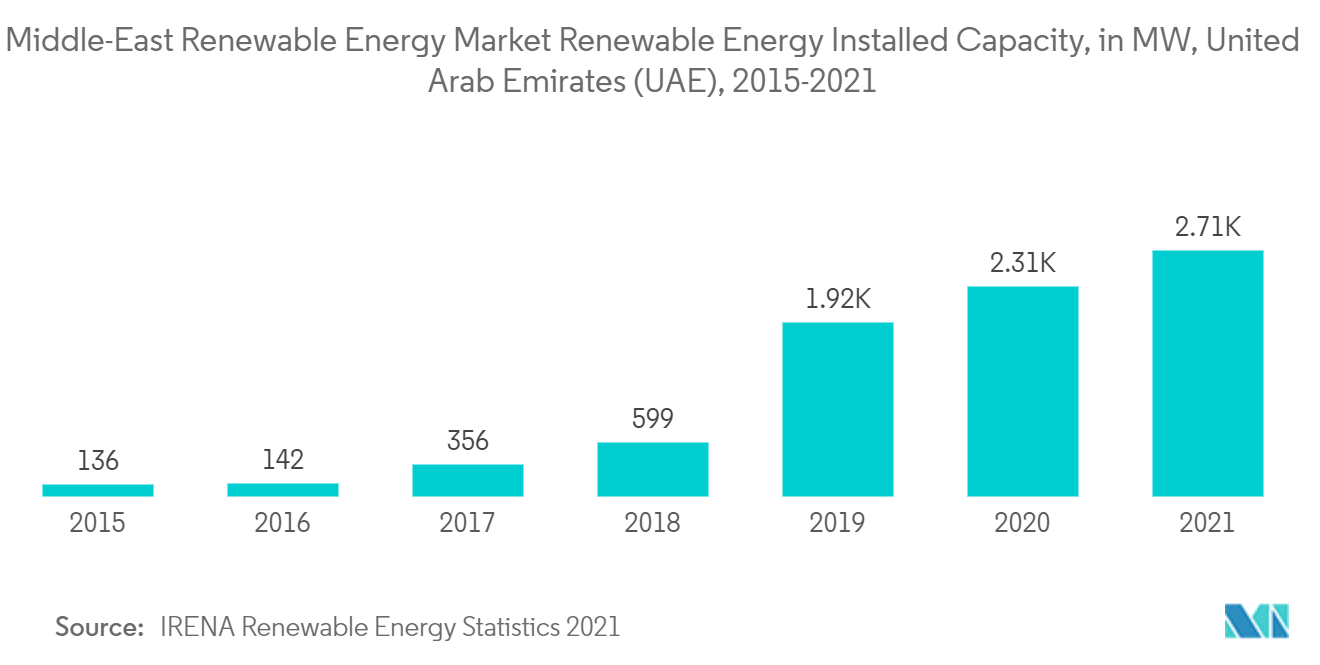Market Trends of Middle East Renewable Energy Industry
This section covers the major market trends shaping the Middle East Renewable Energy Market according to our research experts:
Solar Energy Segment to Witness Significant Growth
- In the Middle Eastern region, solar energy plays a vital role in achieving the country's renewable energy target, and it is expected to show significant growth during the forecast period. In 2015, solar power installed capacity in the Middle East was around 1 GW, which increased to 8.4 GW in 2021.
- According to the Global Energy Monitor report, solar and wind power plants that are to be built by Arab Countries will increase the Middle Eastern renewable energy production capacity by five times. Nearly 45 wind power plants and 114 solar power plants are included in this project.
- Furthermore, according to the Pan Arab Clean Energy initiative by the International Renewable Energy Agency, 92% of the target to be attained through renewable energy generation projects in Middle Eastern countries will be reached by 2030. Solar and wind energy generated by these countries will double the region's renewable power generation capacity by 2030.
- Additionally, increasing natural gas prices and decreasing solar PV costs in UAE have made renewable energy more useful. The country is anticipated to achieve 20% of its electricity from non-fossil fuel sources within three years and derives 50% of its energy from these sources by 2050.
- Furthermore, an upcoming project in the Middle East, investing in renewable energy and solar energy to convert from solar farms to E-trees, will mark a revolution in the world. 'E-tree' is reminiscent of a giant shade tree consisting of a funnel-shaped structure that forms an enormous, slanted 360-degree cantilever that hovers above the garden below. It is also surrounded by 19 small 'E-trees,' which help supply an additional 28% of electricity. These trees will track the sun around the day and optimize harvesting the energy by rotation of 180 degrees. These trees also provide shade and stippled sunlight to the gardens below.
- Therefore, owing to the abovementioned factors, solar energy is expected to witness significant growth in the Middle Eastern renewable energy market during the forecast period.

The UAE is Expected to Witness Significant Growth
- The UAE has undertaken significant steps over the past few years, driving the region toward adopting renewable energy, particularly in the solar sector. Renewable energy projects will generate more than 70 GW of power by 2050, witnessing an investment of USD 700 billion.
- Furthermore, to meet the rising demand, the country embarked on a challenging mission to increase its energy security, diversify its energy sources, and increase the share of solar energy in its power mix.
- The country has proven that it has some of the world's best solar resources while supporting economic and regulatory policies and helping its clean energy program. One of the contributing factors is access to affordable finance.
- In addition to conventional project financing, the solar sector is witnessing financial innovation to help facilitate and provide investments required in the long term, including the AED 100 billion Dubai Green Fund to support the Shams Dubai initiative, a program aimed at promoting the installation of rooftop solar panels.
- Further, several factors converged to make solar energy an attractive option, to meet the country's energy needs. The country is geographically well-positioned, with solar irradiance of approximately 2,285 kWh/m2. It has one of the highest solar exposure rates globally, thereby holding tremendous potential for renewable energy development.
- In addition, the declining cost of solar modules and battery technology is increasing solar PV adoption in the United Arab Emirates. As the cost of solar power is declining rapidly, the United Arab Emirates is evaluating its strategies related to the power sector, which currently relies on large subsidies for electricity generated from natural gas or liquefied natural gas (LNG).
- The 'UAE Energy Strategy 2050' aims to increase the contribution of clean energy to the country's overall national energy mix, to 50%, by 2050, thereby saving approximately USD 190 billion of the overall energy costs. It will help reduce carbon emissions by 70% and increase consumption efficiency by 40%.
- The country is committed to tackling climate change and announced joining the International Solar Alliance, which aims to help developing countries harness 1,000 GW of solar power by 2030.
- Therefore, owing to the abovementioned factors, the United Arab Emirates is expected to witness significant growth in the Middle Eastern renewable energy market during the forecast period.

